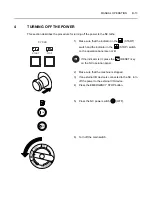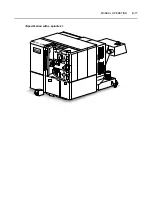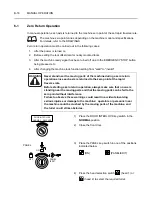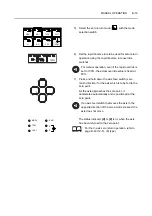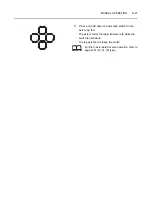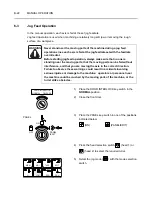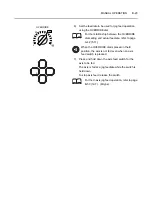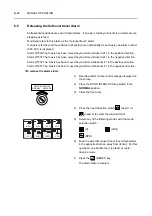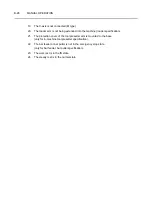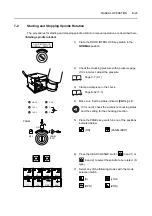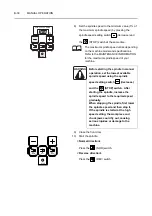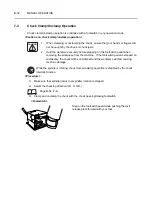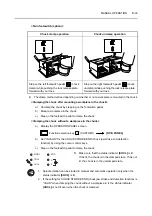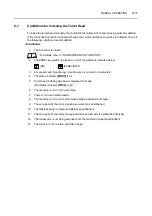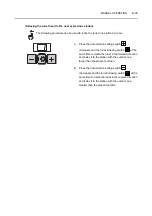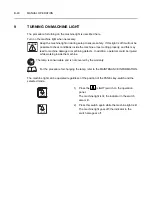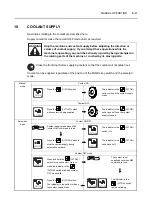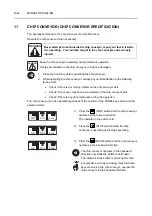
MANUAL OPERATION B-27
7
SPINDLE OPERATION
This section describes the spindle related operations - spindle start and stop.
7-1
Conditions for Starting Spindle Rotation
To rotate the spindle manually, the conditions that allow spindle rotation must be satisfied. If the
spindle does not start although correct operation sequence is followed, check if the following
conditions are all satisfied.
<Conditions>
1.
The front door is closed.
For details, refer to "DOOR INTERLOCK FUNCTION".
2.
The PANEL key-switch is placed in one of the positions indicated below.
(ON)
(PANEL/EDIT)
3.
A manual mode (handle, jog, rapid traverse, zero return) is selected.
4.
The status indicator
[MRDY]
is lit.
5.
The chuck is clamped. (The status indicator
[CHCL]
is lit.)
6.
The machine is not in the reset state.
7.
The machine is not in the M00 or M01 state.
8.
The spindle or rotary tool spindle (M type) is not rotating.
9.
The spindle or rotary tool spindle (M type) is not jogging.
10.
The spindle OFF mode function is invalid.
11.
There is no spindle or rotary tool spindle (M type) related alarm.
12.
External spindle interlock signal (the signal which disables spindle or rotary tool spindle (M
type) rotation) is not input.
13.
The tailstock spindle is not in the inching state (tailstock specification).
14.
The tailstock body is clamped (tailstock specification).
15.
The spindle brake is released (M type).
16.
The turret head is set in the position to index the rotary tool mounting station (M type)
(only in the spindle and rotary tool spindle simultaneous operation mode).
17.
There is no turret zero return request (M type)
(only in the spindle and rotary tool spindle simultaneous operation mode).
18.
The selected rotary tool is mounted in the Z-axis direction (M type)
(only in the spindle and rotary tool spindle simultaneous operation mode).
WARNING
Before starting the spindle, carefully check the workpiece chucking
conditions, the chucking pressure, and the spindle speed. If spindle
rotation is started when the workpiece is grasped unstably or when the
chucking pressure or spindle speed is inappropriate, the workpiece could
fly out, causing serious injuries or damage to the machine.

